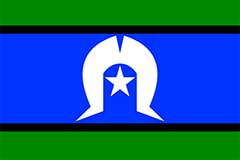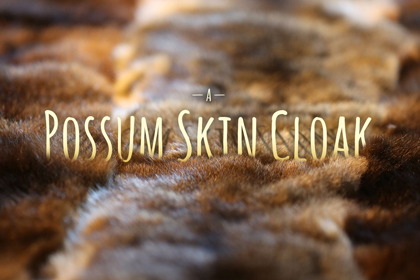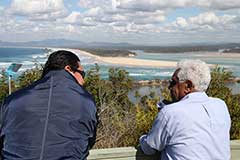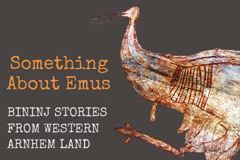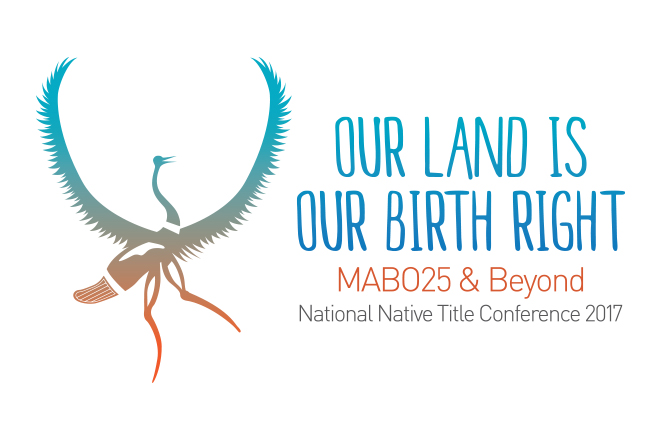Births, deaths and marriages form a chain linking one generation of your family to the next and one branch of your family to another. You can use the BDM information you find to follow these links back through your family tree.
Realistically, you will probably spend a significant amount of time tracking down BDM records as you do your family history research.
Australian government BDM records are indexed, which means you can search by name, place and date. Working backwards from yourself, you should think of all the family names you know, the year your family members were born, married or died and where they were from.
Three types of BDMs
There are two main types of �?mainstream’ BDM records: civil registrations (which are government records) and parish registers (which are church records).
Information about Aboriginal and Torres Strait Islander births, deaths and marriages, however, may have been recorded differently. For example,
- In the Northern Territory nearly all Aboriginal people were named in a Register of Aboriginal Wards published in the Northern Territory Government Gazette, no. 1913, on 13 May 1957. It recorded place of residence, tribal and language groups and dates of births and deaths. A copy is now held by the Registry of Births, Deaths and Marriages in Darwin.
- Aborigines protection and welfare boards recorded Aboriginal births, deaths and marriages of people who were defined as �?Aborigines’ and �?supervised’ by the board.
- Church bodies that managed missions and other institutions recorded BDM information about inmates. Some, like the Aborigines Inland Mission (AIM), published newsletters which announced births, deaths and marriages.
When doing Indigenous family history research it is important to search both mainstream sources of BDM information and Aboriginal-specific sources.
What information will you find on BDM certificates?
BDM certificates can provide a wealth information beyond just dates and places of birth, death and marriage. They often include addresses, names of witnesses who might be family members or friends, maiden names or former married names of women, occupations and religions.
However, the information found on certificates varies. Earlier records are likely to have less information. Some states collected more information than others.
Parish records might have extra information, such as your ancestor’s original signature.
Information you might find on birth, death or marriage certificates
|
Birth certificate: · Surname · Given name of the child · Date of birth · Place of birth · Sex · Father’s name · Occupation · Mother’s name · Mother’s maiden name · Ages · Other children of the · union · Place of residence · Registration number |
Marriage certificate: · Names of the bride and groom · Bride’s maiden and former name/s · Their occupations · Usual place of residence · Where they were born · Any previous marriages · Names of their parents · Registration number |
Death certificate: · Name of deceased · Sex · Date of death · Cause of death · Place of death · Age · Occupation · Residence · Place of birth · Place of marriage · Name of spouse · Children of the union · Where buried · Who the informant was · Registration number |
Points to remember
- Information is only as reliable as the source. The informant on a death certificate may, for example, have hardly known the deceased person.
- Be mindful of spelling variations as people often recorded information as it sounded and in earlier times not many people could read and write.
- Try to double-check information on certificates with other records such as cemetery inscriptions or a family Bible.
- A marriage certificate may give details of the parents of each spouse, and is the most reliable certificate for information as both parties were present at the event and could give the information.
- Birth, death and marriage certificates will sometimes include statements as to Aboriginality, especially in earlier records.
- Births, deaths and marriages of Aboriginal people were often not registered. This was due, in part, to legal restrictions such as the Queensland Aboriginal Protection and Restriction of Sale of Opium Acts 1901, which prohibited the marriage of Aboriginal women to non-Aboriginal men without the express permission of the government.
- Births of Indigenous children were not often registered in order to protect them from removal policies. Large number of Indigenous people worked on pastoral stations where events were recorded in station papers, diaries and resources rather than in the standard birth death and marriage registrations.
- Sometimes you will see the word �?native’ on a birth, death or marriage certificate. This may or may not mean that the person was Indigenous.
How far back do BDM records go?
Compulsory civil registration of births, deaths and marriages was introduced in Australia in the middle of the 19th century. This meant that people were required by law to register these events with government authorities. Despite this, events were sometimes not registered, particularly in remote and rural areas.
In the early days of Australian colonisation the churches alone were responsible for recording baptisms, weddings and burials within their jurisdictions. These records are known as �?early church records’ or �?parish registers’. Churches also continued to record events in parish registers after civil registration was introduced.
Government registries have tried to combine the information in early parish registers into the civil registration indexes where possible. If you don’t find a registration in the indexes, think about what religion your ancestor might have been to and check if parish registers exist.
Year that civil registration of births, deaths and marriages began
- New South Wales 1856
- Victoria 1853
- Queensland 1856 (as New South Wales)
- Western Australia 1841
- South Australia 1842
- Tasmania 1838
- Northern Territory 1870 (formerly South Australia)
- Australian Capital Territory 1930 (formerly New South Wales)
Searching for historical BDM registrations
Some of the historical Australian BDM records have been indexed, meaning that you can search for BDM certificates by name, place and date. Anyone can use the BDM indexes.
You can do online name searches of historical BDMs for the following states:
- New South Wales (or search for �?NSW BDM’)
- Northern Territory – no online access
- Victoria (or search for �?Victoria BDM’)
- Queensland (or search for �?Queensland BDM’)
- Western Australia (or search for �?WA BDM’)
- South Australia (or search for �?SA BDM’)
- Tasmania (or search for �?Tasmania BDM’)
You can also access some BDM indexes through ancestry.com and FamilySearch.
Many libraries and family history societies have copies of BDM indexes on CD-ROM and/or microfiche.
If you are having trouble finding particular information using the online indexes, try those on CD-ROM. Although not as simple to use as the online indexes, you can do more complicated searches in the CD-ROM databases. This is useful if you only have limited information, for example, if you are looking for the birth of a child and you only know the mother’s given name and an approximate year of birth.
Remember you can ask your local librarian or family history society staff for help. Some of the BDM registries also provide specialised services for Aboriginal and Torres Strait Islander people.
Are all BDMs available?
Open period BDMs. Anyone can apply for copies of historical certificates. These are considered �?open’. The table below shows the open periods by state and territory. Note that they are all different!
Closed period BDMs. But there are concerns about privacy and identity theft for more recent BDM events. These are considered �?closed’.
What historical BDMs are available (years ago by state from 2016)
|
State |
Birth |
Marriage |
Death |
|
New South Wales |
100 years ago |
50 years ago |
30 years ago |
|
Queensland |
100 (1829-1916) |
75 (1829-1941) |
35 (1829-1984) |
|
Northern Territory |
1870-1918 |
1870-1913 |
1870-1913 |
|
South Australia |
100 |
75 |
30 |
|
Victoria |
100 |
60 |
10 |
|
Tasmania |
100 |
75 |
25 |
|
Western Australia |
100 |
75 |
30 |
|
Australian Capital Territory |
100 |
75 |
30 |
Access policies
Each BDM authority has rules about the availability of its records to the public. There are also rules about when you need to show permission from the person named in the certificate or show proof of your relationship to them (for example, your parents, children or grandparents).
- Australian Capital Territory BDM access policy [PDF 130kb]
- New South Wales BDM access policy [PDF 250kb]
- Northern Territory BDM access policy
- Queensland BDM access policy
- South Australia BDM access policy
- Tasmania BDM access policy
- Victoria BDM access policy
- Western Australia BDM access policies
Where to get copies of BDM certificates
Each state and territory in Australia has a registry of births, deaths and marriages. You can apply to the registry for official copies of certificates, or use a transcription service where this is available (in New South Wales and South Australia only).
New South Wales, Queensland, Victoria and Western Australia have specialised services to assist Aboriginal and Torres Strait Islander people find and get access to BDM and other information held in these archives about people known to be Indigenous.
New South Wales
Family Records Unit – Aboriginal Affairs
The Family Records Unit at Aboriginal Affairs helps people from New South Wales access state government records about themselves and their family. They also give researchers permission to access Aborigines Protection Board and Aborigines Welfare Board records.
Level 13, Tower B, Centennial Plaza, 300 Elizabeth Street, Surry Hills NSW 2010
Free call: 1800 019 998
Ph: 02 9219 0700
Fax: 02 9219 0790
Email: familyhistory@aboriginalaffairs.nsw.gov.au
Web: www.aboriginalaffairs.nsw.gov.au/about/family-records-unit/
New South Wales
Registry of Births, Deaths and Marriages (NSW)
The Registry of Births, Deaths and Marriages has records of birth, death and marriage in New South Wales from 1856, as well as some earlier church records. You can search family history indexes online. If you need to contact the registry you can request that an Indigenous staff member handle your inquiry.
35 Regent Street, Chippendale NSW 2008
GPO Box 30, Sydney NSW 2001
Ph: 13 77 88
Email: bdm-familyhistory@agd.nsw.gov.au (for questions about family history searches)
Web: www.bdm.nsw.gov.au/Pages/family-history/family-history (Family history)
www.bdm.nsw.gov.au/Pages/contact-us/aboriginal (Aboriginal and Torres Strait Islander services)
Northern Territory
Registry of Births, Deaths and Marriages
The Registry of Births, Deaths and Marriages holds records about the births, deaths and marriages of people in the Northern Territory. The Aboriginal Population Register is also held there – this is a collection of genealogical information about Aboriginal people in the Northern Territory taken primarily from Census information dating back to the 1950s. The register was inherited from the federal Department of Aboriginal Affairs.
Email: AGD.RegistrarGeneral@nt.gov.au
Web: www.bdm.nt.gov.au
Darwin office
Ground Floor, Nichols Place, Cnr Cavenagh and Bennett Streets, Darwin NT 0800
GPO Box 3021, Darwin NT 0801
Ph: 08 8999 6119
Fax: 08 8999 6324
Alice Springs office
Centrepoint Building, Cnr Gregory and Hartley Streets, Alice Springs NT 0870
PO Box 8043, Alice Springs NT 0871
Ph: 08 8951 5339
Tennant Creek office
Tennant Creek Courthouse, Paterson Street, Tennant Creek NT 0860
PO Box 84, Tennant Creek NT 0861
Ph: 08 8962 4377
Fax: 08 8962 4375
Queensland
Department of Aboriginal and Torres Strait Islander Partnerships – Community and Personal Histories
The Community and Personal Histories team can help you use Queensland state government records to research your family and personal history. If you or your family were born in Queensland, they may be able to help you with other information, such as proving your birth date.
Level 6A, Neville Bonner Building, 75 William Street, Brisbane QLD 4000
PO Box 15397, City East QLD 4002
Free call: 1800 650 230
Email: enquiries@datsip.qld.gov.au
Online form: www.qld.gov.au/atsi/cultural-awareness-heritage-arts/family-history-request-form/index.html
Web: www.datsip.qld.gov.au/people-communities/aboriginal-and-torres-strait-islander-family-history
Queensland
Registry of Births, Deaths and Marriages
The Registry of Births, Deaths and Marriages has records of birth, death and marriage in Queensland from 1856, as well as some earlier church records. You can search and access historical birth, death and marriage records online.
110 George Street, Brisbane QLD 4000
PO Box 15188, City East QLD 4002
Free call: 1300 366 430
Email: bdm-mail@justice.qld.gov.au
Web: www.qld.gov.au/law/births-deaths-marriages-and-divorces/family-history-research
South Australia
Births, Deaths & Marriages Registration Office – Office of Consumer and Business Affairs
The Births, Deaths and Marriages Registration Office is responsible for maintaining registers of births, deaths and marriages. You can apply for certificates online but only if you already know the details.
You can access the South Australian BDM indexes on CD-ROM at the State Library of South Australia and other libraries around Australia.
Genealogy SA has published extracts from the South Australian BDM indexes online at www.genealogysa.org.au/resources/online-databases.html
Level 2, Chesser House, 91-97 Grenfell Street, Adelaide SA 5000
GPO Box 1351, Adelaide SA 5001
Ph: 131 882
Web: www.cbs.sa.gov.au/wcm/births-deaths-marriages/bdm-other-topics/family-history
Tasmania
Registry of Births, Deaths and Marriages
Registration of births, deaths and marriages commenced in 1839 in Tasmania, the first Australian colony to take over the function previously conducted by the churches. The registry holds church records (burials, baptisms and marriages) from 1803 to 1839, and birth, death and marriage registrations from 1839 to the present day.
The Tasmanian Names Index provides access to historical Tasmanian birth, death and marriage records online.
Apply in person for birth, death and marriage certificates at Service Tasmania shops around the state
GPO Box 198, Hobart TAS 7001
Free call: 1300 135 513
Ph: 03 616 53457
Fax: 03 6233 6444
Email: bdm@justice.tas.gov.au
Web: www.justice.tas.gov.au/bdm/family_history
linctas.ent.sirsidynix.net.au/client/en_AU/names/ (Tasmanian Name Index)
Victoria
Births, Deaths and Marriages Victoria
Births, Deaths and Marriages Victoria has records of birth, death and marriage in Victoria from 1853, as well as some earlier church records. You can search and access historical birth, death and marriage records online.
The Koori Access Team at Births, Deaths and Marriages Victoria can help you apply and pay for Victorian birth, death and marriage certificates if you are a Koori, Australian Aboriginal or Torres Strait Islander and you hold a pension concession card or health care card.
Ground floor, 595 Collins Street, Melbourne VIC 3001
GPO Box 5220, Melbourne VIC 3001
Free call: 1300 369 367 (General and family history inquiries)
Ph: 03 9613 5103 (Koori Access Team)
Email: vicbdm@justice.vic.gov.au (General and family history inquiries)
BDMIndigenousAccess@justice.vic.gov.au (Koori Access Team)
Web: www.bdm.vic.gov.au/home/family+history (Family history)
www.bdm.vic.gov.au/home/koori+services (Koori services)
Western Australia
Aboriginal History Research Unit – Department of Aboriginal Affairs
The Department of Aboriginal Affairs Aboriginal History Research Unit manages access to Western Australian state archives and some privately owned records. You can apply as a personal or family history applicant for your own records or those of your ancestors. You can apply for any records relating to you held by the department, or those relating to a specific purpose such as evidence of genealogy, dates and place of birth or a specific ancestor.
151 Royal Street, East Perth WA 6004
PO Box 3153, East Perth WA 6892
Free call: 1300 651 077
Fax: 08 6551 8088
Email: ahru@daa.wa.gov.au
Web: www.daa.wa.gov.au/community-development/ahru
Western Austraila
Registry of Births, Deaths and Marriages
The Registry of Births, Deaths and Marriages has records of births, deaths and marriages in Western Australian from 1841. You can search historical indexes online for free.
Westralia Square, Level 10, 141 St Georges Terrace, Perth WA 6000
PO Box 7720, Cloisters Square, Perth WA 6850
Free call: 1300 305 021
Ph: 08 9264 1555
Fax: 08 9264 1599
Web: www.bdm.dotag.wa.gov.au
Transcription services
Transcriptions provide the same information as certificates and are usually cheaper and quicker, but can’t be used for legal purposes. Ask the BDM registry if there are registered transcription services in that state.
What if you can’t find BDM records?
It may be difficult to find BDMs for family members. Some common reasons are:
- the registration name was spelled differently from the one you searched for
- the registration name was different from the name the person was usually known by
- the birth was registered under the mother’s maiden name
- the registration name was a nickname or alias
- the event was never registered, due to reasons such as distance, suspicion of the system, and natural events like floods or fires
- the event was registered in an unexpected place – for example, the person was born at one place but registered in a different town
- information provided at registration was incorrect, either deliberately (for example, to hide illegitimacy or under-age marriage) or because the correct information wasn’t known
- information recorded at registration was incorrect because the registrar misheard, misspelled or misinterpreted the information told to them
- a keyboard error or an error in interpreting the original handwriting was made when the index was compiled
- the event is outside the open period for access to BDM records.
What you can do
You can try to find other records for birth, death and marriage information, for example:
- BDM certificates of other people in the family, such as brothers and sisters of the person you’re researching
- Trove digitised newspapers – birth, baptism, death, marriage, funeral and in memoriam notices for family members; reports on inquests, divorces, etc.
- Mission records – especially registers of baptisms, marriages, births and deaths
- �?Protection’ and welfare records – letters, reports, censuses, diaries, records of children in training institutions
- Tindale genealogies or other ethnographical or anthropological collections
- War service records
- Divorce records
- Cemetery records
- Inquest records
- Electoral rolls
- Census records
- Family Bible
See CoraWeb – Birth, death and marriage records: Australia for more ideas.
